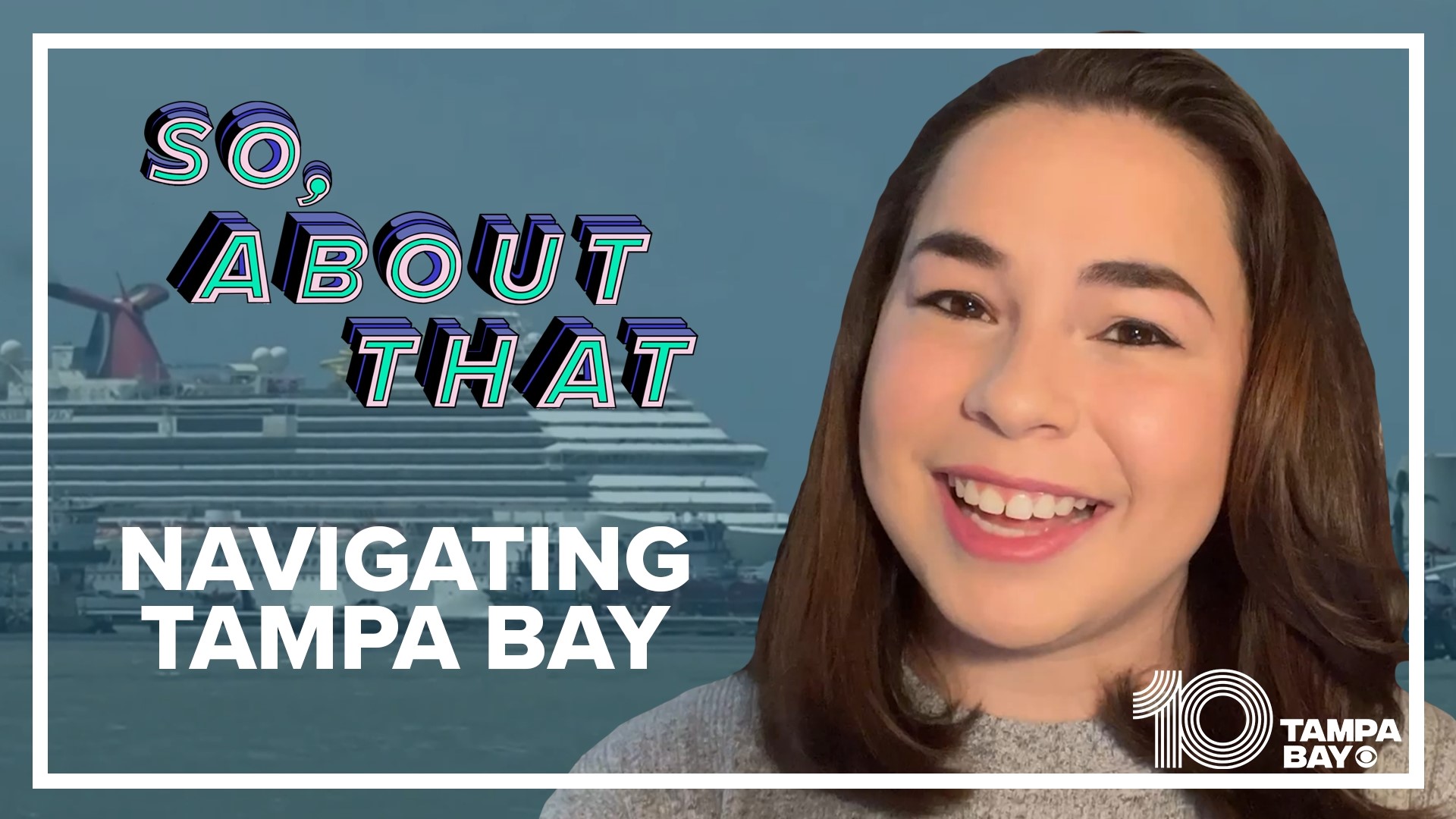TAMPA, Fla. — Have you ever taken a boat out in Tampa Bay, looked down, and seen the sand bed at the bottom? If you didn’t know, the bay is relatively shallow, with an average depth of 11 feet.
And if you’ve ever looked out onto the bay, you may have noticed large cargo and cruise ships passing through. With ships that large, it’s safe to say they wouldn’t be able to travel in water that shallow.
How do they make it to port? It’s not an easy process, and it requires skills that take years to learn and master.
Tampa Bay is Florida’s largest open-water estuary and Port Tampa Bay is Florida’s largest port. That means every day, cargo and cruise ships bring billions of dollars in economic impact. With 33 million tons of cargo coming into Tampa Bay every year, ships are constantly moving through Tampa Bay’s shallow waters.
Let’s first talk about those waters. The Tampa Bay shipping channel runs from the gulf all the way to the port, making it a lifeline.
These channels must constantly be maintained and it can be very difficult. According to Bay Soundings, the bottom of the channel collects enough debris, like sand and silt, to fill Raymond James Stadium to the top 10 times every single year. Periodically, the channel must be dredged and all that excess debris is barged to an offshore site.
So, it seems like a pretty simple process. Captains follow their maps, navigate the shipping channel and make it to the port. Wrong. It’s much more complicated than that, and there’s a whole profession dedicated to helping these ships get to port safely. They’re called maritime pilots.
If you thought your job was hard, wait until you hear about these pilots. And no, not like pilots of a plane and not like the captain of a ship.
When those large ships make their way into Tampa Bay, a pilot will meet them and climb aboard the ship using a good old-fashioned rope ladder. They will then join the captain and guide the ship into the port.
So, why do captains need a pilot? With advanced navigation technology, shouldn’t they be able to maneuver the ship themselves? Well, nothing beats decades of knowledge about Tampa Bay and that’s one of the reasons why maritime pilots are so important.
Becoming a pilot is anything but easy. According to the Tampa Bay Pilots Association, the typical state pilot attends a maritime academy. Upon graduation, they will receive a bachelor’s degree and a U.S. Coast Guard license. Then, they will leave their family to work on ocean-going vessels for 10 to 12 years, working their way up.
Even then, they aren’t guaranteed a spot as a pilot. Potential pilots have to undergo a competitive exam. After identifying the five highest-scoring candidates, the Board of Pilot Commissioners will appoint one individual as the deputy harbor pilot. Then they’ll undergo a couple more years of training and are reassessed to earn a state harbor pilot license. Candidates have said they studied for at least 1,000 hours just to prepare for the exam.
It’s also a very dangerous job. Between 2006 and 2007, four pilots and a pilot boat operator were killed during transfers, that part where they climb onto the ship with the ladder.
To put it simply, these pilots are experts at what they do. They have a vast knowledge of Tampa Bay, they can operate any vessel of any size, on top of being able to communicate with and lead ship crews from all over the world.
Do you have any questions about the Tampa Bay area or maybe just why things are the way they are? You can connect with Katie by emailing her at mjones@10tampabay.com or you can find her on Twitter.

